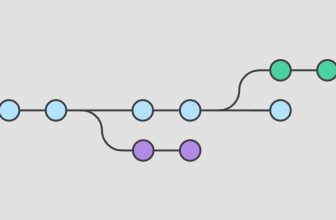
Here at SkillComplete, our team of experienced web developers and technical enthusiasts has conducted thorough research of all the available courses on leading online learning platforms such as Udemy, Coursera, Edx, Linkedin learning, and compiled the list of Best Microservices courses, tutorials, training, certifications, and classes for you. We have also listed free resources to help you in your learning journey. The listed programs are suitable for beginners, intermediate, and advanced developers. First, let us look at a brief introduction about Microservices.
The conventional way of building applications is using a Monolithic architecture. This way has become problematic as applications are growing larger and more complex. As a result, developers are migrating to Microservices architecture to improve performance, precision, and productivity. On the one hand, in a monolithic architecture design, all the components of the application, are tightly coupled thus, scaling or modification becomes more complex and risky. On the other hand, in a microservices architecture, a monolith component is divided into independent modules. This results in a loosely coupled design. These standalone modules accomplish specific functionalities and interact with each other through Application Programming Interfaces (APIs).
Microservice architectures let you divide your applications into autonomous services, each managed by individual teams within your organization. Microservices bring multiple benefits to a development organization:
- Scalability – Scaling the application to accommodate the growing demand is simpler with Microservices-based applications. The development teams can scale individual components, and this scaling makes the job easier, economical, and faster.
- Faster development – Developing new features require adding new components instead of redoing the entire application. This results in improved development speed and stability.
- Fault tolerance – If one of the services fails, the others are likely to continue working, therefore providing better fault tolerance.
- Improved data security – Since the individual services connect through APIs, the developers become accountable for their specific service data, eventually improving the data security.
- Improved productivity – New developers can get up to speed in no time since they need to understand only a small part instead of the whole application. This approach also improves developer productivity where debugging and maintenance are concerned.
- Future-proofing of the applications – Microservices architecture allows developers to add new components and scale the applications effectively and reliably. Hence organizations feel free to introduce new features, upgrade or replace specific services whenever required.
Another reason that makes Microservice based design more sought after is its compatibility with the cloud. Microservices can run on distinct servers, and the developers can access the specific service from any part of the world. This cloud-based deployment makes these services more reliable and efficient. Let us now look at some of the best microservices courses available online to get you started.
Top Microservices courses and tutorials online:
Master Microservices with Java, Spring, Docker, Kubernetes – Udemy
This course is one of the highest-rated courses on the Udemy platform. This course will help you develop an understanding of the fundamentals of Microservices architecture. The instructor will guide you on how to build your custom microservice application using SpringBoot, Spring Cloud components, Docker, and Kubernetes.
Key points :
- What is microservices architecture, and how is it different from monolithic and SOA architectures.
- Learn how to build microservices using Spring, and Spring Boot.
- What are cloud-native apps and the 12-factor principles behind them?
- Learn to achieve configuration management in microservices using Spring Cloud Config Server.
- Learn about service discovery and registration patterns inside microservices, and how to implement them using the Spring Eureka server.
- Learn how to build resilient microservices using the RESILIENCE4J framework.
- Learn how to handle cross-cutting concerns and routing inside microservices using Spring Cloud Gateway.
- Learn to implement distributed tracing & log aggregation in microservices using Spring Sleuth and Zipkin.
- Monitoring microservices using Prometheus and Grafana.
- Understanding the role of Docker in microservices, and building docker images and containers.
- Role of Kubernetes in microservices as a container orchestration framework.
Pre-requisites: Prior understanding of Spring framework and Java is required.
Duration: 16 hours | Level: All levels | Access: Lifetime | Certificate: Certificate of completion
Building Scalable Java Microservices with Spring Boot and Spring Cloud – Coursera
This course is brought to you by Google cloud services. In this course, you will learn to create Java applications using Spring Boot and Spring Cloud and deploy these on Google Cloud. You will use Spring Cloud Config to manage your application’s configuration and Pub/Sub and Spring Integration to send and receive messages. You will use Could SQL as a relational database for your Java application and learn to migrate to Cloud Spanner (Google Cloud’s consistent database service).
Key points :
- Learn how to build Java applications using Spring Boot and Spring Cloud on Google Cloud.
- Send and receive messages with Pub/Sub and Spring Integration.
- Use Cloud SQL as a managed relational database for your Java applications, and learn to migrate to Cloud Spanner.
- Learn about tracing and debugging your Spring applications with Google Cloud’s operations suite.
Pre-requisites: Prior understanding of Spring framework and Java is required.
Duration: 14 hours | Level: Intermediate | Access: Lifetime | Certificate: Certificate of completion
Master Microservices with Spring Boot and Spring Cloud – Udemy
This course is one of the best sellers for Microservices on the Udemy platform. If your goal is to learn to build a Rest API with Spring boot or build a Microservice with Spring boot and Sping cloud, then this course is tailor-made for you. If you wish to learn to build containers with Docker and orchestrate microservices with Kubernetes, then look no further!
Key points :
- Develop and design RESTful web services with Spring Boot.
- Develop MICROSERVICES with Spring Boot and Spring Cloud.
- Orchestrate microservices with KUBERNETES.
- Create containers for microservices with DOCKER.
- IMPLEMENT Exception Handling, Validation, HATEOAS, and filtering for RESTful Web Services.
- Implement client-side load balancing (Ribbon), Dynamic. Scaling(Eureka Naming Server) and an API Gateway (Zuul).
- You will learn to set up Centralized Microservices Configuration with Spring Cloud Config Server.
- You will learn to implement Distributed tracing for microservices with Spring Cloud Sleuth and Zipkin.
- You will implement Fault Tolerance for microservices with Hystrix.
- You will understand how to version your RESTful Web Services.
- You will understand how to monitor RESTful Services with Spring Boot Actuator.
- You will understand how to document RESTful Web Services with Swagger.
- You will understand the best practices in designing RESTful web services.
- Using Spring Cloud Bus to exchange messages about Configuration updates.
- Simplify communication with other Microservices using Feign REST Client.
Pre-requisites: Prior understanding of Spring framework and Java is required.
Duration: 19.5 hours | Level: All levels| Access: Lifetime | Certificate: Certificate of completion
Microservices with Node JS and React – Udemy
This course is a perfect introduction to the world of full-stack development. You will work from the frontend, building a React app using Hooks, to the backend, including database design and deployment techniques. Every phase along the way is covered in immense detail, with abundant diagrams to ensure every step is crystal clear. This course focuses on the most challenging aspects of microservices, challenges that you will likely encounter every single day. You will see these complications first hand, then decode them with easy-to-understand strategies.
Key points :
- Architect large, scalable applications using a collection of microservices.
- Deploy a multi-service app to the cloud with Docker and Kubernetes.
- Solve the concurrency issues in a distributed systems environment.
- Leverage your Javascript skills to build a complex web app.
- Build a Server-Side Rendered React App to render data from your microservices.
- Understand how enterprise companies design their infrastructure.
- Share reusable code between multiple Express servers using custom NPM packages.
- Write comprehensive tests to ensure each service works as designed.
- Communicate data between services using a lightning-fast event bus.
- Write nothing but production-level code. No cutting corners!
Pre-requisites: Prior knowledge of front-end development using JavaScript is required.
Duration: 54 hours | Level: All levels | Access: Lifetime | Certificate: Certificate of completion
Spring Boot Microservices and Spring Cloud – Udemy
This course targets developers who are inexperienced in Restful Web services and Microservices. It provides a step-by-step guide to build and run a Restful Microservice from scratch. You will also learn to deploy your service in Docker Container on AWS EC2 Linux machines. You will get an insight into Eureka Discovery Service, Zuul API Gateway, Spring Cloud API Gateway, Load Balancer, and Spring Cloud Config Server.
Key points :
- Build and run RESTful Microservices.
- Implement User Authentication.
- Eureka Discovery Service.
- Implement User Authorization with Spring Security and JWT.
- Spring Cloud API Gateway.
- Learn to use JPA to persist data into a database.
- Spring Cloud Config Server.
- Learn to install MySQL Server and insert data into MySQL.
- Spring Cloud Bus and Rabbit MQ.
- H2 in-memory database and H2 Console.
- Spring Boot Actuator.
- Learn to use HTTP Postman and Spring security.
- Learn to use Spring Initializer
- Distributed Tracing with Sleuth and Zipkin
- Learn to use Spring Tool Suite
- Centralized Logging with ELK Stack(Logstash, Elasticsearch, Kibana)
- Run Microservices in Docker Containers
Pre-requisites: Prior understanding of Spring framework and Java is required.
Duration: 18.5 hours | Level: All levels | Access: Lifetime | Certificate: Certificate of completion
Application Development using Microservices and Serverless – Cloudera
If you are a developer who is ready to explore serverless application development, then this intermediate-level course is for you! This course introduces you to serverless programming, its benefits, deployment models, top use cases, and design patterns. You’ll also discover how serverless supports continuous integration and continuous delivery (CI/CD) and microservices integration. This course provides hands-on labs to reinforce serverless programming concepts for building, deployment, and invocation of cloud-based functions (including the deployment of microservices using OpenShift and Istio).
Key points :
- Summarize the fundamentals of Microservices, their advantages, and contrast with monolithic architectures.
- Explain the capabilities of service mesh including Istio, why is it useful, and how it alleviates challenges with Microservices.
- Explain the process for deploying Microservices on OpenShift.
- Describe Function As A Service (FAAS) capabilities and benefits.
Pre-requisites: Prior understanding of serverless is not required.
Duration: 10 hours | Level: Intermediate | Access: Lifetime | Certificate: Certificate of completion
Reactive Microservices with Spring WebFlux – Udemy
A Developer/Architect interested in Microservice architecture with WebFlux will be benefitted from this course. Learn to build highly scalable and resilient Microservices using Spring WebFlux / Reactive Stack. By the end of this course, you will acquire an understanding of Spring web-flux, functional end-points, Spring data reactive Mongo DB, Spring data R2DBC, Web client, Server-Sent Events (SSE), and much more.
Key points :
- Learn from scratch about Spring WebFlux.
- Develop an understanding of Reactive Microservices.
- Learn to deploy into Spring Data Reactive MongoDB.
- Using Spring Data R2DBC.
- Learn Server-Sent Events.
- 3 Microservices Development From Scratch.
- Understand WebClient and functional endpoints.
Pre-requisites: Prior understanding of spring boot and reactive programming is preferred.
Duration: 8.5 hours | Level: All levels | Access: Lifetime | Certificate: Certificate of completion
Software Architecture: Breaking a Monolith into Microservices – LinkedIn Learning
In this tutorial, the tutor covers effective strategies for adopting microservices, taking a high-level look at the fundamentals without getting into programming languages, container runtimes, Kubernetes, or other technicalities. Instead, he talks about the technical and organizational challenges you need to address to successfully re-architect your existing platforms to microservices.
Key points :
- Know the challenges in refactoring your existing applications.
- Learn how to split capabilities into services.
- Learn how to provide a migration API layer.
- Learn how to streamline cross-team collaboration.
- Learn about Continuous Integration and Deployment (CI/CD).
Pre-requisites: No prior understanding of microservices is required.
Duration: 1 hour | Level: Intermediate | Access: Lifetime | Certificate: Certificate of completion
Microservices Foundations – LinkedIn Learning
This course covers the basic concepts of Microservices to help you determine if this architectural model is the right fit for you and your organization. The tutor will guide you on some core concepts of microservices, including bounded contexts and the API layer. He then discusses some advanced concepts of microservices, as well as the importance of embracing a DevOps culture if you choose to move to microservices.
Key points :
- Reviewing the history of service-based architectures
- Learn about Microservices and cloud-native.
- Learn how to establish communications in a microservices architecture.
- Learn how to use data domains as a service boundary.
- Learn to log and trace in a microservices architecture.
- Use Continuous delivery as a requirement.
- Addressing design considerations and patterns.
- Embracing a DevOps culture.
Pre-requisites: No prior understanding of microservices is required.
Duration: 1.5 hours | Level: Intermediate | Access: Lifetime | Certificate: Certificate of completion
Scalable Microservices with Kubernetes – Udacity
If you are currently involved in infrastructure management — as a sysadmin or a developer — this course will enable you to build on that experience. For learners who are new to the field, this video class is an excellent opportunity to familiarize yourself with microservices, containers, Docker, Kubernetes, and deployment patterns. By the end of this course, you will be able to run your first application on your very own Kubernetes cluster in the cloud!
Key points :
- Containerize an application by creating Docker config files and build processes to produce all the necessary Docker images.
- Configure and launch an auto-scaling, self-healing Kubernetes cluster.
- Use Kubernetes to manage to deploy, scale, and update your applications.
- Employ best practices for using containers in general, and specifically Kubernetes, when architecting and developing new microservices.
Pre-requisites: Understanding Linux command-line tools and fluency in at least one programming language is required.
Duration: Self-paced | Level: Intermediate | Access: Lifetime | Certificate: Certificate of completion
Service-Oriented Architecture – Coursera
This course is part of the Software Design and Architecture Specialization offered by the University of Alberta. In this course, you will review the available architectures for web applications, then explore the basics of Service-Oriented Architecture (SOA) in two paths: Web Services (WS*) and Representational State Transfer (REST) architecture. They offer a Capstone Project, in which you will connect a Java-based Android application with Elasticsearch, a web service with a REST application programmer interface (API).
Key points :
- Describe SOA (Service-Oriented Architecture) to structure web-based systems.
- Explain WS* services (i.e., SOAP over HTTP, WSDL, UDDI, BPEL).
- Apply REST architecture (i.e., JSON over HTTP, URI).
- Identify REST design principles.
- Create a system using REST interfaces.
- Apply microservice architecture.
Pre-requisites: No prior understanding of microservices is required.
Duration: 10 hours | Level: Intermediate | Access: Lifetime | Certificate: Certificate of completion
Conclusion:
That’s all about the best Microservices courses online. Microservices have had a huge impact on the software development industry recently. This substitute technique to the monolithic architectural model, which was a conventional approach for software development for years, provides organizations with a streamlined way to develop, monitor, manage, deploy, and scale all kinds of applications via the cloud. Platforms like AWS and Azure facilitate this process. We hope the above list of consolidated best microservices courses helps you in your learning journey.
Thanks for reading this article. If you found the list useful, share it with your friends and colleagues. In case you have any questions or feedback, please feel free to drop a note.
Happy learning!



![Best Jenkins Courses Online – Updated [April 2024]](https://skillcomplete.com/wp-content/uploads/2022/01/jenkins-blog-1-336x220.jpg)